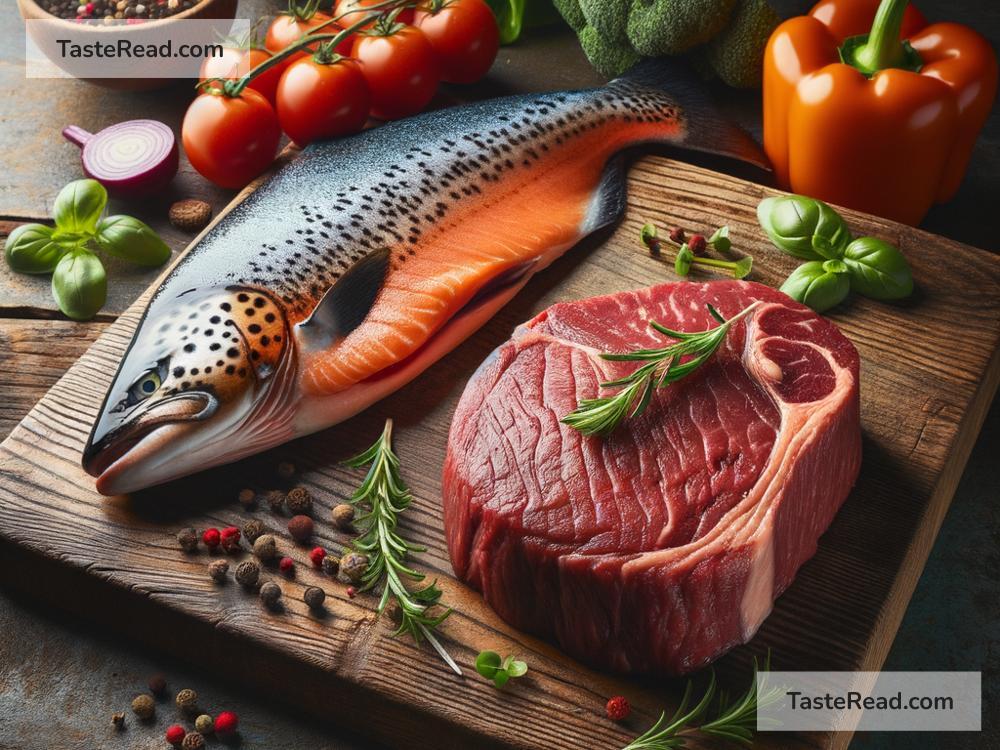How to Choose Paleo-Friendly Meats and Seafood
Eating like our Stone Age ancestors doesn’t have to be complicated, especially when it comes to picking out paleo-friendly meats and seafood. The Paleo Diet, inspired by the way early humans ate, focuses on consuming whole foods that were available during the Paleolithic era. This means lots of lean meats, fish, fruits, vegetables, nuts, and seeds. On the flip side, it means steering clear of processed foods, grains, legumes, and dairy.
When it comes to choosing meats and seafood that fit into the Paleo lifestyle, there are several key factors to consider to ensure you’re getting the most nutritious options. Here, we break down how to choose the best paleo-friendly meats and seafood.
1. Go for Grass-Fed and Pasture-Raised Meats
Animals that are grass-fed and raised on pastures generally have a healthier balance of fats, including more omega-3 fatty acids, which are beneficial for your heart. They’re also higher in vitamins and minerals compared to their grain-fed counterparts. Grass-fed beef, pasture-raised chicken, and heritage-breed pork are not just better for your body, but they also support farming practices that are better for the environment.
2. Embrace Lean Cuts
On the Paleo Diet, the emphasis is on lean meats. This means trimming away visible fat from beef, pork, and lamb, and opting for skinless poultry. Lean meats have the protein you need without the extra saturated fat. Look for cuts like sirloin or tenderloin, and when it comes to poultry, breast meat is generally leaner than thighs or wings.
3. Wild-Caught Seafood is Key
When it comes to seafood, wild-caught is the way to go. Wild fish generally have a more varied diet than farm-raised fish, leading to a better nutritional profile. They tend to be higher in omega-3 fatty acids and lower in pollutants. Salmon, mackerel, sardines, and trout are excellent Paleo choices because of their high protein and healthy fat content.
4. Variety is the Spice of Life
Diversifying the types of meat and seafood you eat not only keeps your meals interesting but also ensures you’re getting a wide range of nutrients. Each type of meat and seafood has its own set of vitamins and minerals. By mixing it up, you’re more likely to hit all your nutritional needs without having to rely on supplements.
5. Keep Seasonality and Sustainability in Mind
Eating seasonally and choosing sustainable options is in line with the Paleo philosophy of living in harmony with nature. Opting for seafood that is in season and certified sustainable helps to reduce overfishing and supports the natural ecosystems of our waters. When it comes to meat, look for local producers who use ethical farming practices. Not only are you making a choice that’s good for the planet, but seasonally caught and harvested meats and seafood often taste better too.
6. Processed Meats: A Paleo No-No
It’s important to avoid processed meats like sausages, deli meats, and bacon that contain additives, preservatives, and high levels of sodium. These do not fit into the Paleo lifestyle due to their high level of processing and artificial ingredients. If you do choose to include these items in your diet occasionally, look for options that are uncured and contain no nitrates.
7. Reading Labels is Crucial
When shopping for meats and seafood, it’s crucial to read labels carefully. Look for terms like “grass-fed”, “pasture-raised”, “wild-caught”, and “sustainable”. Be wary of items labeled as “natural” since this term isn’t strictly regulated and may not mean what you think. If you have access to a local butcher or fishmonger, don’t hesitate to ask questions about the sourcing and farming practices of their products.
8. Don’t Forget About Eggs
While not technically meat, eggs are an excellent source of protein and nutrients and are perfectly Paleo. Opt for eggs that are free-range or pasture-raised. These eggs tend to have a richer nutritional profile, including higher levels of omega-3 fatty acids and vitamins E and D, compared to conventionally raised eggs.
In Conclusion
Adopting a Paleo lifestyle doesn’t have to mean giving up on delicious and nourishing meats and seafood. By following these simple guidelines, you can make informed choices that align with Paleolithic eating principles and support your health and well-being. Remember, the focus is on whole, unprocessed foods, so when in doubt, opt for the most natural and minimally processed options available. Happy hunting and gathering!


